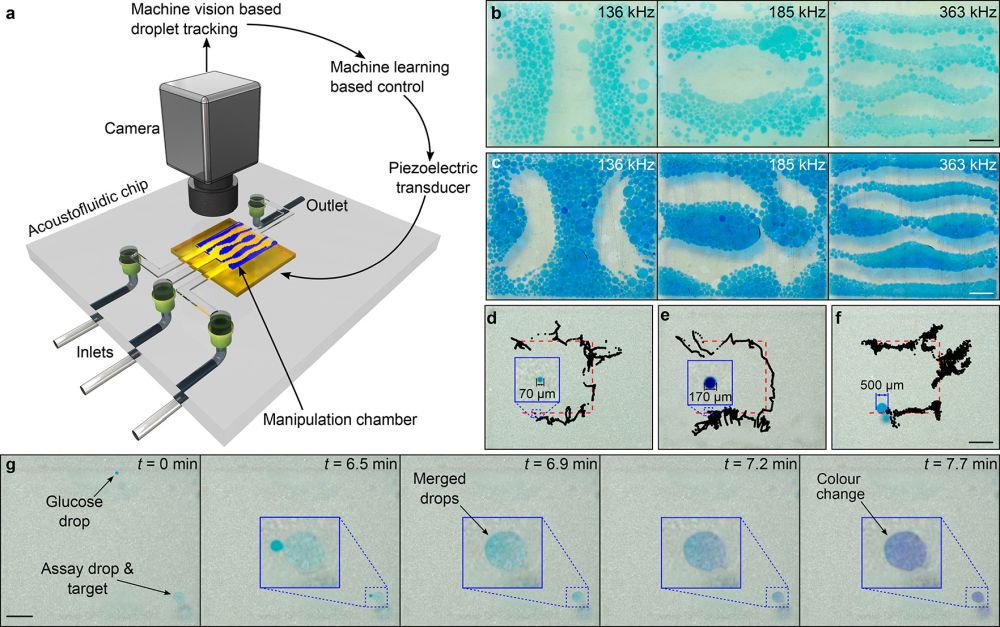
06 Oct Machine learning-guided droplet microfluidic platform
Abstract
“Typical microfluidic devices are application-specific and have to be carefully designed to implement the necessary functionalities for the targeted application. Programmable microfluidic chips try to overcome this by offering reconfigurable functionalities, allowing the same chip to be used in multiple different applications. In this work, we demonstrate a programmable microfluidic chip for the two-dimensional manipulation of droplets, based on ultrasonic bulk acoustic waves and a closed-loop machine-learning-based control algorithm. The algorithm has no prior knowledge of the acoustic fields but learns to control the droplets on the fly. The manipulation is based on switching the frequency of a single ultrasonic transducer. Using this method, we demonstrate 2D transportation and merging of water droplets in oil and oil droplets in water, and we performed the chemistry that underlies the basis of a colorimetric glucose assay. We show that we can manipulate drops with volumes ranging from ∼200 pL up to ∼30 nL with our setup. We also demonstrate that our method is robust, by changing the system parameters and showing that the machine learning algorithm can still complete the manipulation tasks. In short, our method uses ultrasonics to flexibly manipulate droplets, enabling programmable droplet microfluidic devices.”

“Acoustic transport and merging of droplets inside a microfluidic chip-based on machine learning. (a) Concept of the manipulation method. (b,c) Acoustic patterns of water droplets in oil (b), and oil droplets in water (c), for the frequencies 136 kHz, 185 kHz, and 363 kHz. The pattern formed by oil drops in water is the inverse of the pattern formed by water drops in oil, due to the opposite acoustic contrast factor. (d–f) Controlled manipulation of water droplets in oil, with varying droplet diameters: (d) 70 μm, (e) 170 μm, and (f) 500 μm. (g) Demonstration of a droplet-based glucose assay. A glucose droplet (dyed green) is guided toward a droplet containing the assay reagents (dyed light blue). The merging of the two droplets triggers a color change, turning the droplet purple. All scalebars are 1 mm.” Reproduced under Creative Commons Attribution 4.0 International License from Kyriacos Yiannacou, Vipul Sharma, and Veikko Sariola Langmuir 2022 38 (38), 11557-11564 DOI: 10.1021/acs.langmuir.2c01061.
Figures and the abstract are reproduced Kyriacos Yiannacou, Vipul Sharma, and Veikko Sariola Langmuir 2022 38 (38), 11557-11564 DOI: 10.1021/acs.langmuir.2c01061
Read the original article: Programmable Droplet Microfluidics Based on Machine Learning and Acoustic Manipulation


